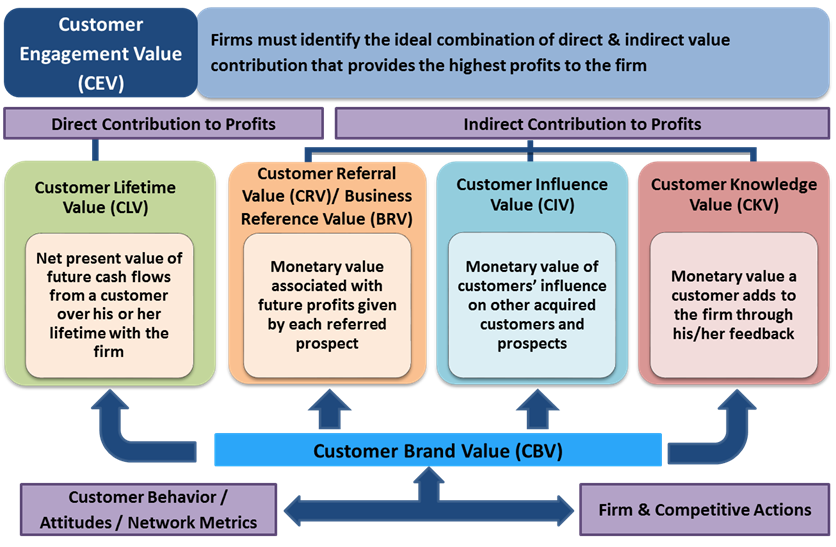CUSTOMER ENGAGEMENT SUITE
Extending the Power of CLV
Customer contribution to firm profitability occurs in two ways: (a) directly – through their purchases, and (b) indirectly – through their non-purchase reactions, i.e., by making referrals to potential customers, by influencing current and potential customers in their network, or by using their own experiences to provide review/feedback for improvements. Identifying the right set of customers who create value for the firm can be useful in trying to maximize profits. In this regard, the Customer Engagement Value (CEV) framework can be used to identify and evaluate the right customer, who is successfully engaged with the firm, and who generates value and positively contributes to the profits of the firm (Kumar, V. (2013)).
Customer Engagement Value Framework

By consolidating all customer data into a single centralized system and using that system across the organization, companies can gain valuable insights into what customers need, want and value most. Further, firms can identify important trends and patterns in the data that contribute to the success of the business. As a result, the total value from a customer’s engagement could evolve from the measurement of CLV, CBV, CRV/BRV, CIV and CKV of that customer. This ensemble of metrics helps firms assess the degree (in value terms) to which a customer directly or indirectly impacts a firm or its product, with the goal of increasing the profitability of the firm.
Reference
Kumar, V. (2013), Profitable Customer Engagement: Concept, Metrics, and Strategies. New Delhi, India: Sage Publications.